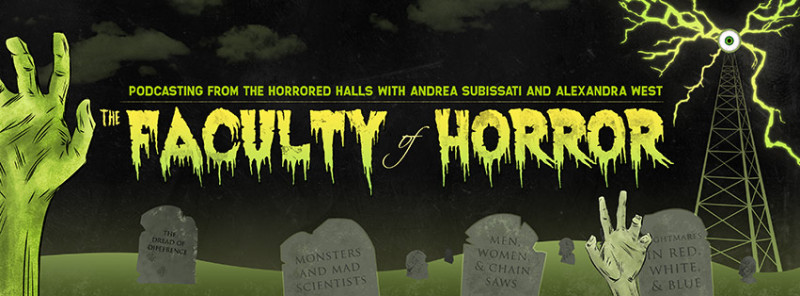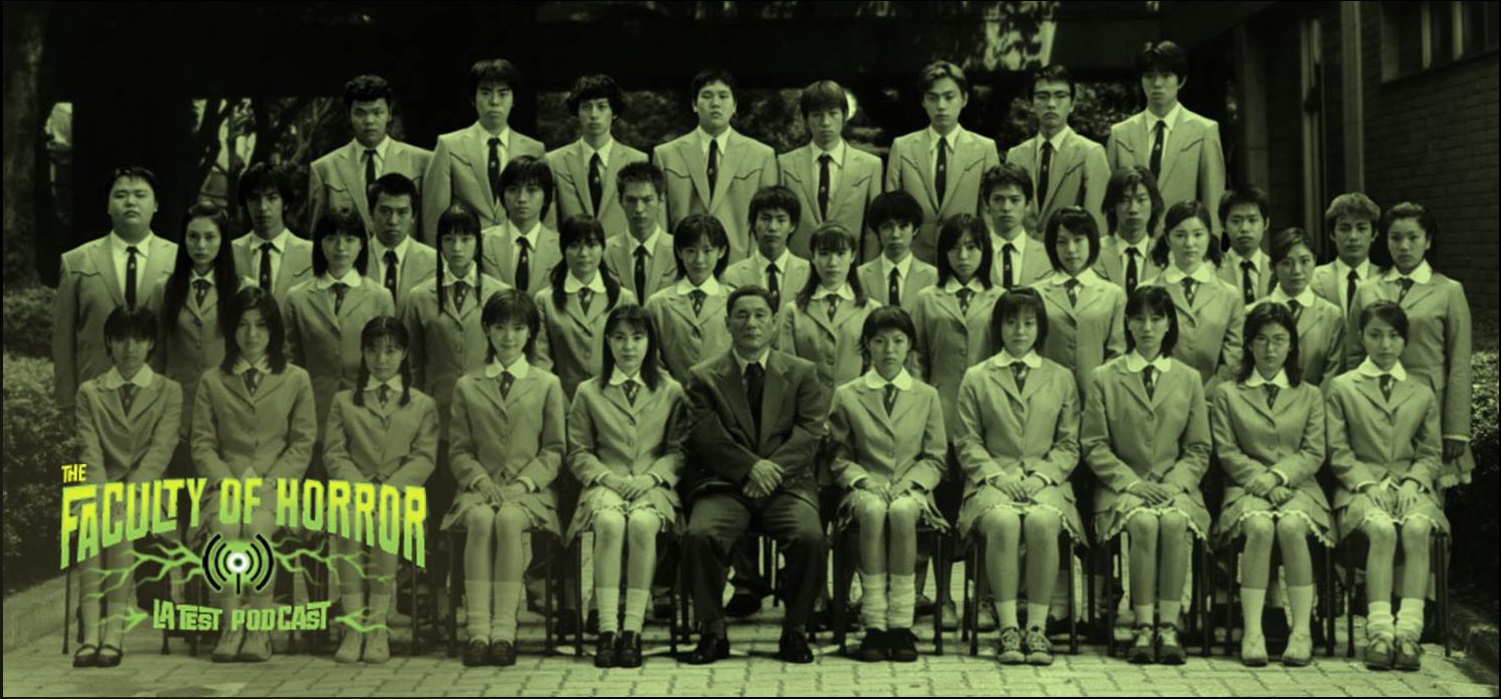Andrea and Alex grab their randomly assigned weapons and try to survive the danger zones of Kinji Fukasaku’s turn of the millennium classic while discussing the film’s emphasis on generational divides and the construction of adolescence.
REQUIRED READING
Battle Royale. Dir Kinji Fukasaku, 2000.
EXTRA CREDIT
Battle Royale by Koushun Takami.
The Japanese High School: Silence and Resistance – A thorough overview of the Japanese high school system and its cultural impact.
You Must Remember This Podcast – Karina Longworth’s episodes on Charlie Manson’s Hollywood are great. Highly recommended listening for Faculty lovers!
COURSE NOTES
Intro song: Nail Ballet from Nightmare Picture Theatre, courtesy of James Zirco Fisher.
Podcast: Play in new window | Download


I have to say that being someone in the same age group as Suzanne Collins and who has probably read 10 times as much SF as her, I find it easy to believe that she has never heard of Battle Royale, as I hadn’t until I went into the Hunger Games comment section on IMDB and found it completely spammed by Battle Royale fanboys. If she weren’t a follower of Japanese literature or cinema, I don’t know why she would have heard of it.
As you said, there are other obvious antecedents (to both movies)like Lord of The Flies and The Most Dangerous Game, both of which were required reading for our generation. The Survivor, by Walter Moudy, and Ender’s Game by Orson Scott Card are also probable influences on both movies/novels. Really, any dystopian novel that uses the device of proxies fighting wars for the government could be influences, as well as Gladiator stories like Spartacus, the Star Trek episode “Bread and Circuses” and the list goes on and on.
A question came up which was “How can the adults be so much more interested in the resulting winner as opposed to the battles?”
I suspect that the observation that some of the beginning items might have a significance in that it establishes the sort of details that were not left to chance. That some characters have “Defensive” items, like a shield, binoculars, etc. might be representative of the strategies of the characters that wind up wielding them. Given that consistency, it’s not too much of a stretch to believe that the incongruity is an intended comment on the behavior of adults regarding the “winners” of childhood. With rare exceptions, adults do not treat children as if they possess agency until they “survive” childhood. Whether that is because the adults were traumatized to such a degree, or some other reason is left for another post.
The whole item thing = theme has been done heaps, recently and interestingly with the Crystal Gems & Steven on Steven Universe. The whole too traumatized to recognize thing is evident in the first rule of Fight Club.
The gloss of the American rendering of the concept is interesting for what it does and doesn’t allow for in it’s world. Examination of the understandable, if not justifiable, motives of the competitors may be an “Adults are only interested in the winner” dynamic, just sliced at a different angle. The direct patronage mechanism (audiance rating = healing salve) may or may not be tolerable to Japanse or American audiences for different reasons. (Such direct patronage may undermine ideas of merit, or be the basis of ideas of merit.)